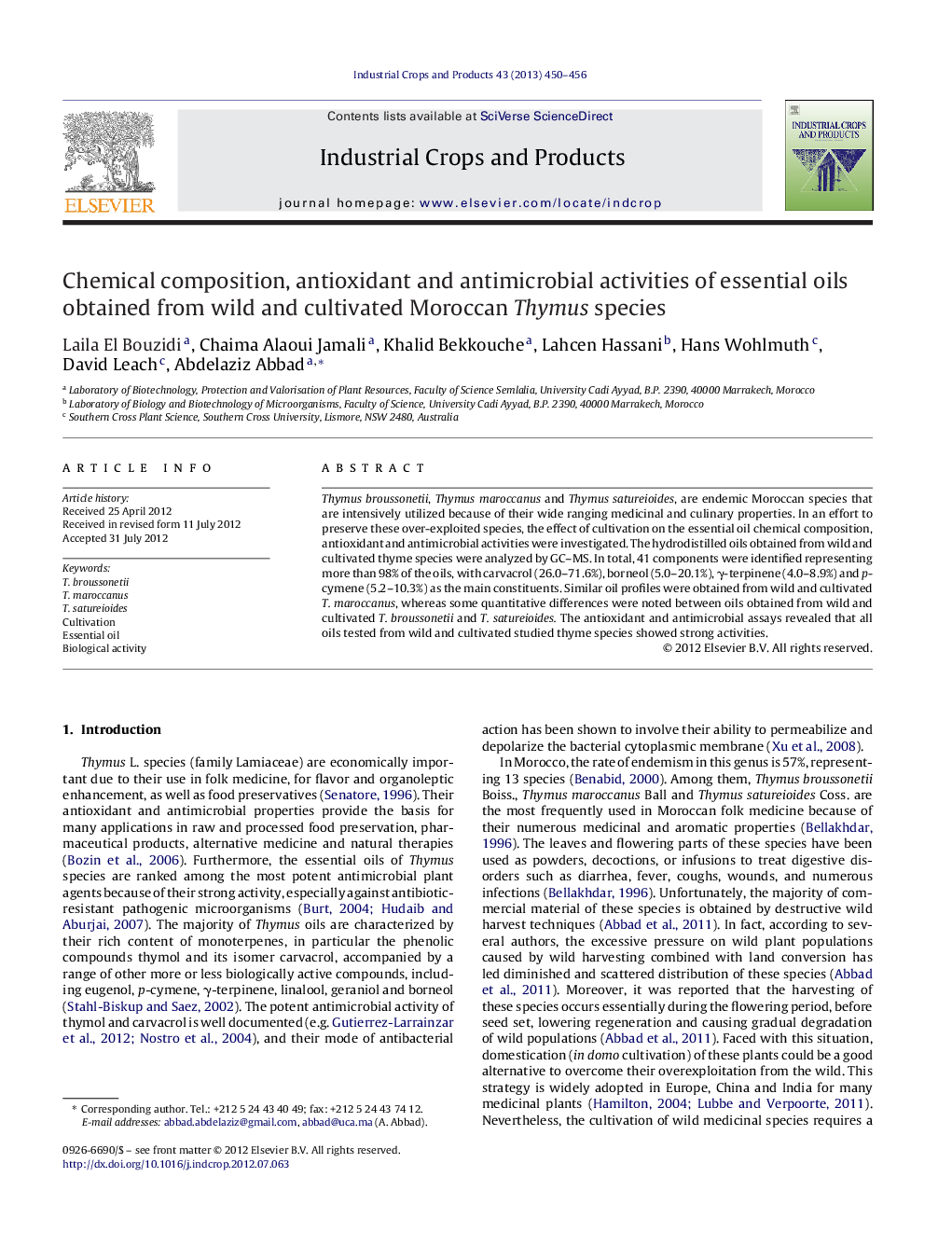| Article ID | Journal | Published Year | Pages | File Type |
|---|---|---|---|---|
| 4514154 | Industrial Crops and Products | 2013 | 7 Pages |
Thymus broussonetii, Thymus maroccanus and Thymus satureioides, are endemic Moroccan species that are intensively utilized because of their wide ranging medicinal and culinary properties. In an effort to preserve these over-exploited species, the effect of cultivation on the essential oil chemical composition, antioxidant and antimicrobial activities were investigated. The hydrodistilled oils obtained from wild and cultivated thyme species were analyzed by GC–MS. In total, 41 components were identified representing more than 98% of the oils, with carvacrol (26.0–71.6%), borneol (5.0–20.1%), γ-terpinene (4.0–8.9%) and p-cymene (5.2–10.3%) as the main constituents. Similar oil profiles were obtained from wild and cultivated T. maroccanus, whereas some quantitative differences were noted between oils obtained from wild and cultivated T. broussonetii and T. satureioides. The antioxidant and antimicrobial assays revealed that all oils tested from wild and cultivated studied thyme species showed strong activities.
► Carvacrol was found as a predominant component in all the essential oils studied. ► Oil composition reveals similar profiles for wild and cultivated Thymus maroccanus oils. ► Thymus broussonetii and Thymus satureioides showed variation of some chemical constituents. ► Oils obtained from wild and cultivated Thymus species showed biological activity. ► Cultivation did not affect the biological activity of the Thymus species studied.
